
The Roman Catholic parish of St. George in Sopot, also known as the garrison Church of St. George (Polish name Kosciot garnizonowy pw. sw. Jerzego or Pzymskokatolicka Garnizonowa Parafia sw. Jerzego), located at: Tadeusza Kościuszki 1 81-881 Sopot Poland.
Walking along one of the main pedestrian streets of the city of Monte Cassino (Bohaterow Monte Cassino) up from the Pier, the old lighthouse and the beach, passing the famous dancing house and climbed a little higher on the street, you will come to a small square where the left is the Church of St. George. The parish was once a civil-military.
Patrons of the parish are St. George and our lady of Czestochowa. Czestochowa icon of the Mother of God, according to legend, the face of the Mother of God, is a miraculous icon of the virgin, painted by St. Luke. This is one of the most famous and revered shrines of Poland and Central Europe. Due to the dark hue of the face icon is also known as the "Black Madonna". The location of the center of the veneration of icons is Jasna góra (Polish title: Jasna Gora) in the Polish town of Czestochowa - the monastery of the Pauline and the greatest religious center of the country.
The poles are very religious and cherish the Holy places, temples, and parishes. For them it is a sacred place booth, where the soul approaches the Creator. Therefore, to talk loudly, make noise, walk in large groups or flash photography in the houses of God, they considered in bad taste, an insult and disrespect the saints. If you are in the Church will be talking or taking pictures you are certainly not kicked out, but can you Boo can. So our advice is better not to do and to be treated with respect for their cultural religion.
The arrival of Gothic style, of red brick with a stone façade and tower of a conical shape trailing edge in the heavens.
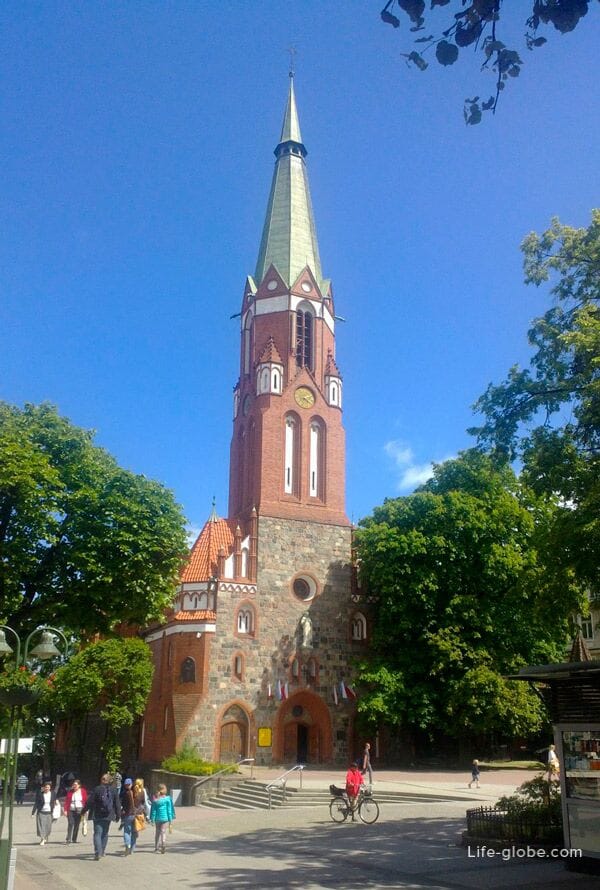
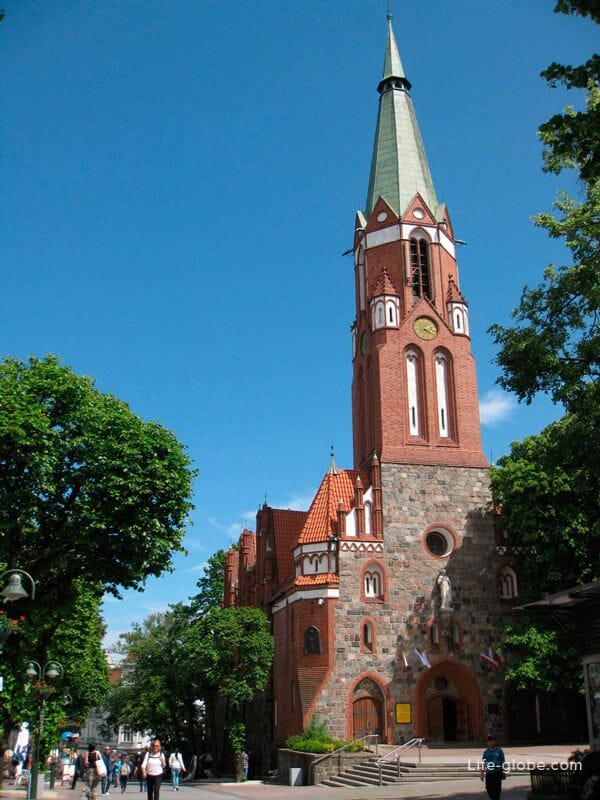
Arched entrance to the tower

The Church interior is quite modest, in the center is the altar. The aisle, on the floor tile, both sides of the aisle rows of wooden benches. Towering above the aisle hanging bulk chandelier. In the Church is twilight.
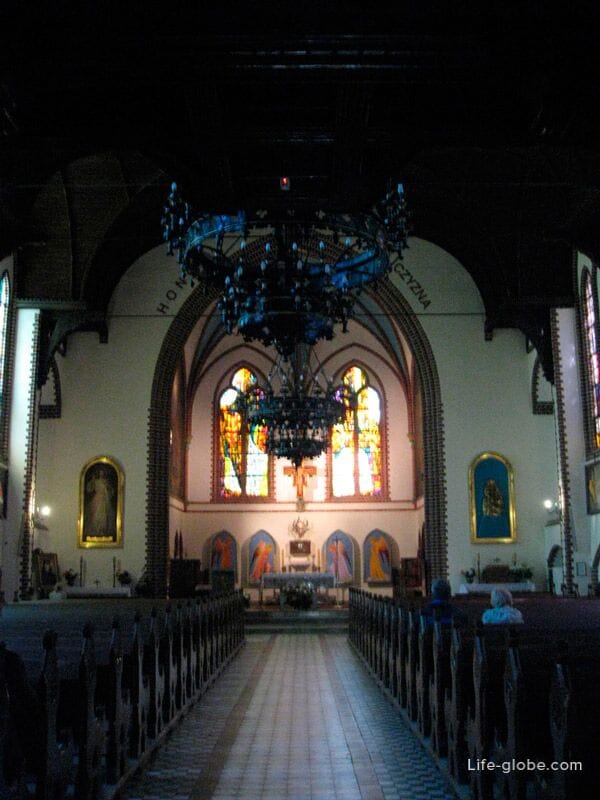
In the parish are service daily and Sunday:
- on weekdays at 7:30 and 18:00
- on Sundays 7:30, 9:30, 11:00, 12:30, 18:00 and 19:30.
Novena to our lady of Czestochowa takes place on Wednesdays at 17:30. Devotion to Divine Mercy on Fridays at 17:30.
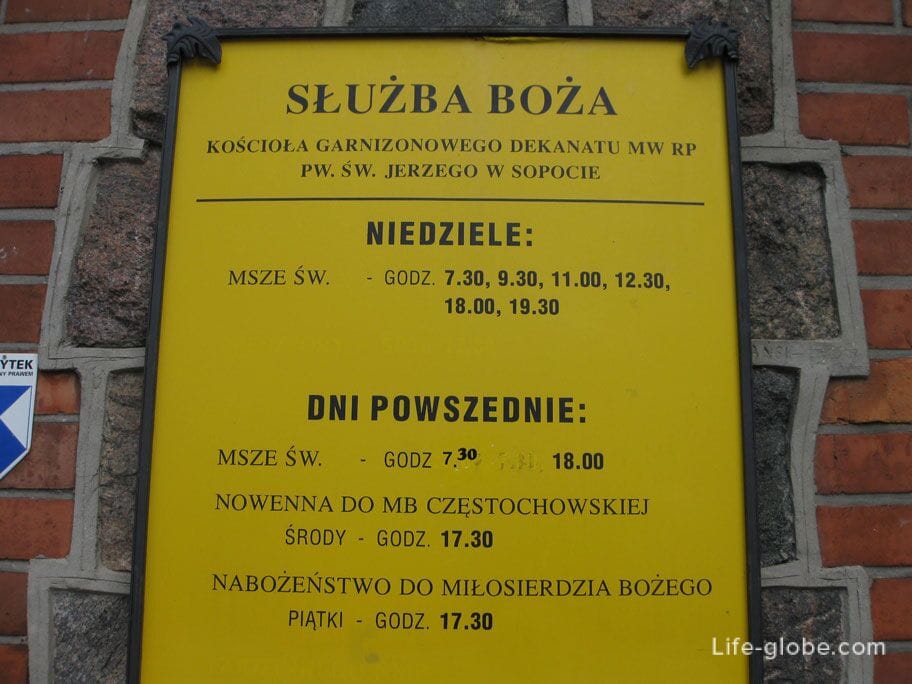
On the square near the Church established a chapel in the Gothic style with a tiled roof resting on four columns. In the centre of the chapel is a statue of St. albert.
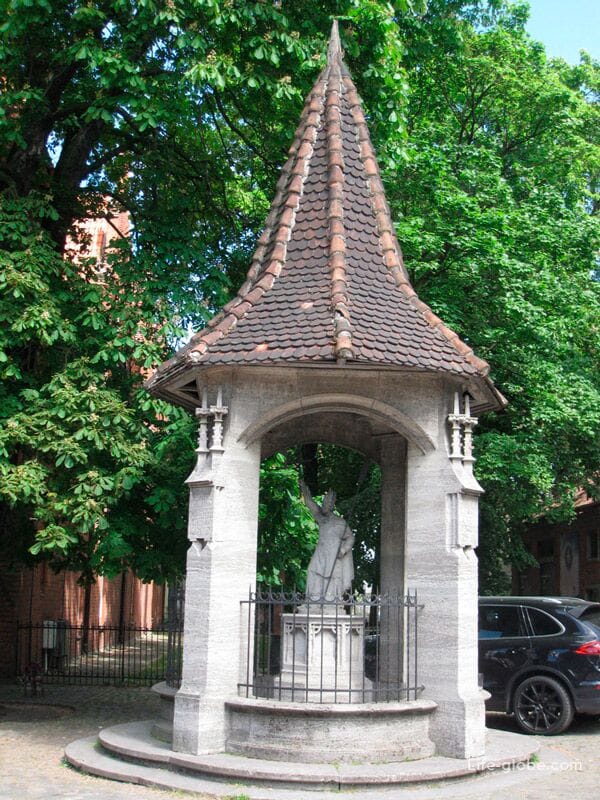
History Roman Catholic parish
The local Church was built in the years 1899-1901 through the efforts of the Sopot community Lutheran Church. Originally it was only a small chapel. But the city is continually evolving, and the number of inhabitants grew and eventually the chapel became too small space for everyone was not enough.
In 1884, the parish Council decided to increase the area of the Church, and in 1885 was erected an additional chapel.
Later was developed a project of building a large Church on the site of two small chapels. However, the project did not find approval from the Royal officials. Officials felt that the arrival of such a densely populated and Spa town of Sopot as should not only serve as a religious residence, but also to beautify the city. The result is that the Council in January, 1877, a resolution was adopted for the construction of a new Church. The Committee vigorously took up the fundamental question, the purpose of which was to raise funds to build a new Church. The Committee was directed proschalnoe letter to Her Majesty the Empress August Victoria with a request to subsidise the construction and acceptance of the construction project. However, this petition has not found a positive review of the Empress, due to the lack of funds in the Treasury. This has not diminished the enthusiasm of the Committee, after which it was decided to engage in mass activities to find sufficient funds for construction. What were organized concerts and theatre performances aimed at raising funds, which were held from house to house in the city of Sopot, as well as outside the city, in the provinces of East Prussia. For organised events, donations were collected, which were then sold at the market and account for them was about money. Even the Empress donated for this purpose valuable works of art. Thus collected money helped start the construction works.
The Church project was approved by Emperor Wilhelm II, on whose advice the Church tower was increased in height by 7.5 metres, so you can see all prisalivaya courts.
The Church was located in a prominent location in accordance with the recommendation of the Consistory, the so-called sea mountain (Seeberg) and subsequently became the pride of the city. The Church to this day is the main pride of the city.
The long-awaited day of laying the first stone took place on 22 October 1899, on the birthday of Her Majesty the Empress with her personal participation. The Church was named Church of our Saviour.
The temple is located on sea mount near the train station. The Church was built in the South-German neo-Gothic style of red brick with stone facade. The parish provided the 656 seats in the nave, and 128 seats in the gallery of bodies. Only 784 places. This was more than enough for those times.
The construction was completed within the prescribed period, and on September 17, 1901, the parish opened its doors to parishioners. The solemn dedication of the new Church took place with the participation of Empress Augusta Victoria. In the belfry hung three bells weighing 500, 1000 and 3000 kg, Windows trimmed with stained glass, also in the Church brought to the altar, pulpit, benches, lamps, rugs, and other small items of equipment.
In addition, in the square before the Church built a picturesque neo-Gothic chapel with a ceramic roof resting on four columns. The chapel was founded in 1909. In the first years after the construction played a role in the street of the well, currently in the chapel is a statue of St Adalbert (albert). It was in this chapel was a set of candles after the terrorist attacks of September 11, 2001.
To have a private, beautiful Church has been an important element in the further development of Protestantism in Sopot. The city continues to develop as a resort, increasing the number of permanent residents and vacationers, including evangelicals. Soon the Church was too small to meet the needs of a growing parish. Needed extension of the Church of the Savior, however, this issue has not found approval.
Until the end of the Second world war the Church was used by Protestants. May 8, 1945 was transferred to the military chaplains for the requirements of the Roman Catholic Church with the aim of garrison churches and schools. In the same year the Church was renamed by the name of St. George. Later, on September 26, 1959 through the efforts of the then rector father Lieutenant Colonel Victor Klosowicz the parish received its second name - our lady of Czestochowa.
From the original furniture of the Church are preserved only chandeliers, benches and 23-voice organ.
In 1970, in the Church at the request of the Second Vatican Council the wooden altar was removed and in its place installed a new marble altar, on the walls were pictures of George. 1953-1956 the walls of the temple decorated with two frescoes. In 1973-1976 in the Church were installed stained-glass Windows.
By a decision of the Department of culture and arts of gdańsk, dated 12 August 1976, the Church was entered in the register of monuments province of Gdansk. Since 2007, the Church is under the special control and protection.